The new Fitbits are smarter, better-looking, and more well-rounded
Fitbit (FIT), the biggest maker of fitness trackers, has just introduced two new models, and they’re pretty great.
We’ve come a long way since “fitness tracker” meant “step counter.” The new Fitbit Charge 2 ($150) and Flex 2 ($100) still count your steps each day, of course. But now they also auto-track your sleep (quantity and quality), runs, walks, bike rides and calories burned; remind you to get up and move a little if you’ve been sitting motionless for an hour (sitting, it turns out, may shorten your life); and notify your wrist when calls and texts are coming to your phone.
The Charge 2 also monitors your pulse continuously, tallies up flights of stairs you take, and can even guide you through a surprisingly effective two-minute stress-relieving breathing exercise. All of this appears in the Fitbit phone app, which is fantastic.
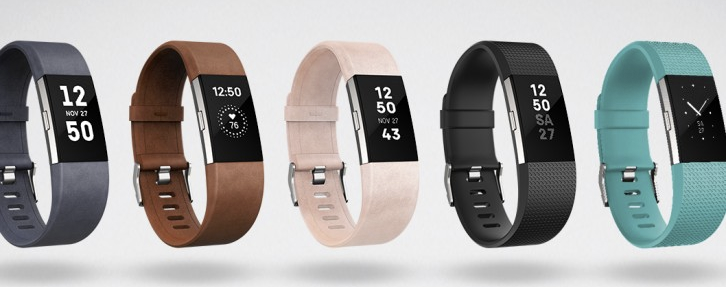
Fitbits and their rivals have always been intended to be motivational tools more than scientific ones—but they’re getting better on both counts. On the accuracy front, both are scarily good at measuring sleep: You wake up, check the corresponding phone app, and marvel at the graph that reflects every bathroom break, cat interruption and nightmare.

And following a bug-fixing upgrade this week, the Charge 2 is now the master of walk/run/biking distance that it always should have been.
As for motivation: Both of Fitbit’s new bands use clever visual and vibrating cues to prod you to move more, and reward you when you do. For example, the Charge 2 introduces a brilliant, semi-augmented-reality reward feature: As your step count grows through the week, it tracks where you’d be if you’d walked the same distance on the hiking paths of Yosemite or the route of the New York City Marathon. You can hold your phone up and look around, turning your body, and see the stunning views that you’d see if you were there—no matter how gritty and depressing your actual location.
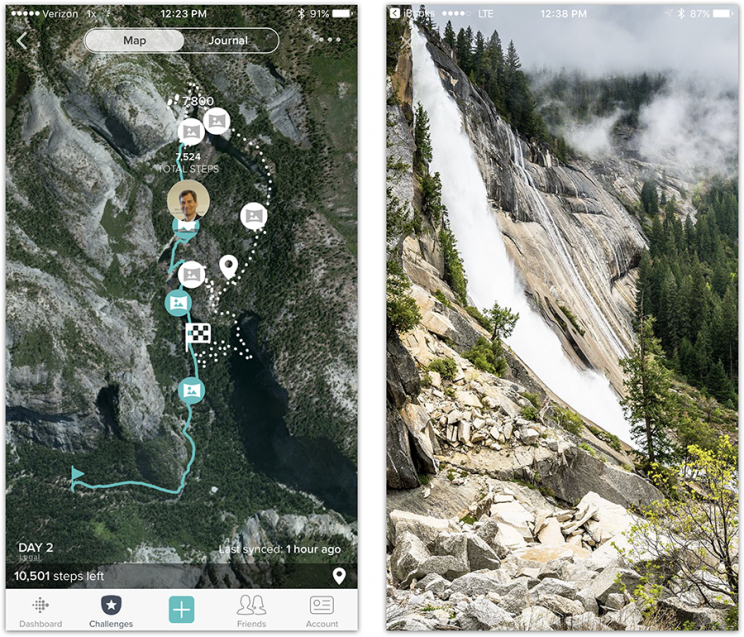
So far, there are only two of these “adventures,” as Fitbit calls them, and you get to do the panorama thing only at certain spots. But it’s a fresh approach to rewarding your progress—and motivation is what these things are all about.
The Charge 2
Last year, I tested 22 fitness bands. The winner: the Fitbit Charge HR (= Heart Rate monitor).
It turned out to be Fitbit’s winner, too—by far its bestseller. Well, the Charge 2 is its successor. (Fitbit no longer sells one model with, and one without, the heart monitor.)
Here’s what’s new:
Interchangeable bands. The brains of the Charge 2 (like the Flex 2 and the older Fitbit Alta) are contained in a self-contained module, which detaches from its bands. Fitbit sells replacement plastic bands in various colors, plus more expensive ones in leather. (Fitbit asserts that swappable bands was the No. 1 feature request for the new tracker.)
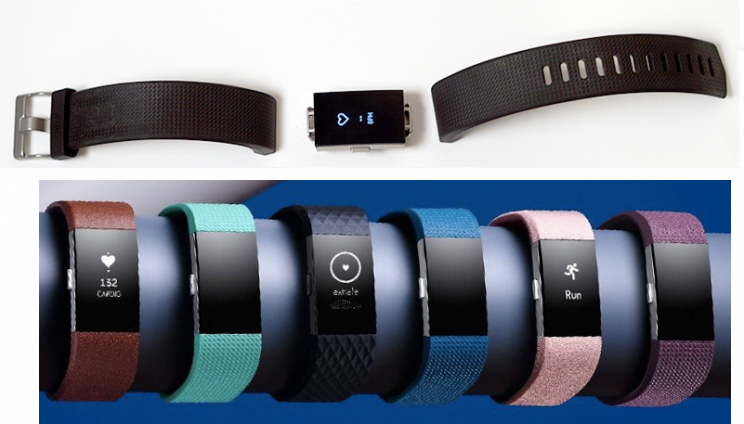
Deluxe editions. The Charge is already better looking than its predecessors, and most of its rivals. But now, for an added fee, you can buy the Charge 2 with side panels made of rose gold or black metal instead of silver. Baffling—who even notices the sliver of metal on the side?—but whatever.
The screen is four times bigger. It’s a really great screen, bright and crisp. (So bright, in fact, that it occasionally lights up as you toss in bed, creating a flash that you see even with your eyes closed.)

Notifications. The Charge 2 shows the first 40 characters of incoming text messages and calendar appointments, and identifies the caller when a call comes in. Unfortunately, the screen is always vertical, so text messages have to scroll across an uncomfortably narrow space. And you see only the first 40 characters (why!?). And you have to wake the watch within 30 seconds of the message buzzing or that text is gone for good. And there’s no way to reply or re-read texts. Fitbit’s response: “This is not a smartwatch.” If that’s what you want, you should look into something like the Fitbit Blaze or the Apple (AAPL) Watch. To keep the Charge simple and focused (and maintain its six-day battery life), the company intends to keep smartwatch clutter away.
Multi-sport tracking. The Charge 2 has special modes for tracking running, weights, treadmill, biking, elliptical or any kind of interval training. (That last one uses vibration cues and on-screen messages to coach you through start/stop exercises.) You choose the sport and tell the tracker when you’re starting and stopping; it shows all kinds of relevant data, in real time, during the exercise.
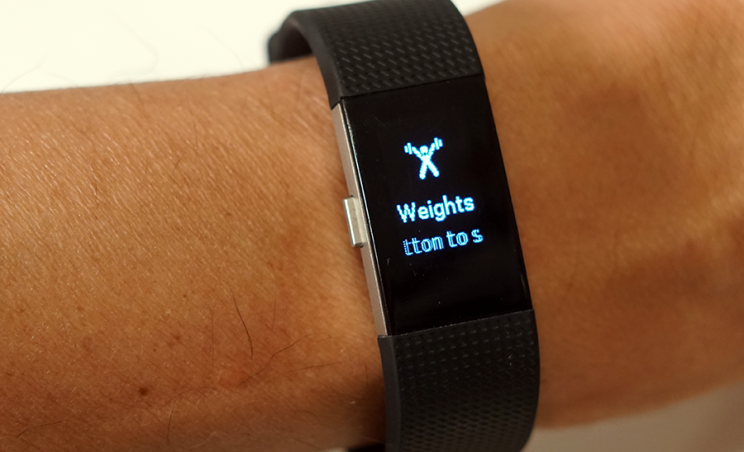
Smart Track. These are activities that the Charge measures automatically: walking, running, biking or other aerobic workouts. As long as you keep up the session for at least 15 minutes, the tracker detects and records the type of exercise all by itself. (This feature blew my mind the first time I returned from a bike ride and saw, in the app, that an “outdoor bike ride” had been recorded. How did it know, especially since your wrist doesn’t move when you’re pedaling? Fitbit says that its sensors are sensitive enough to pick up the road vibration that characterizes a bike ride.)
Connected GPS. The Charge can’t do GPS by itself. But if you carry your phone with you on a walk, run, or bike ride, it can derive GPS data from the phone, and thereby graph your path on a map, record your distance and time and otherwise behave like a device that does have GPS.
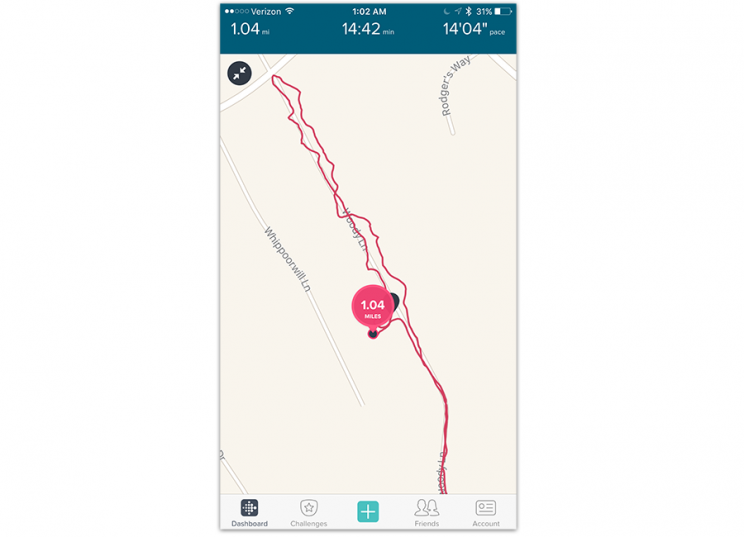
Cardio fitness level. The Charge estimates your VO2 Max: a measurement, beloved by athletes, of your maximum oxygen intake during exercise. It’s a fairly good one-number grade for your aerobic fitness. Of course, a fitness band can’t actually measure your oxygen intake. The Fitbit uses the data it does have, like your age, resting heart rate, running stride, and peak heart rate during a 10-minute run, to calculate your breathing and therefore your VO2. The company says it wants to “democratize” VO2, making it both more available to the masses and more frequently discussed.
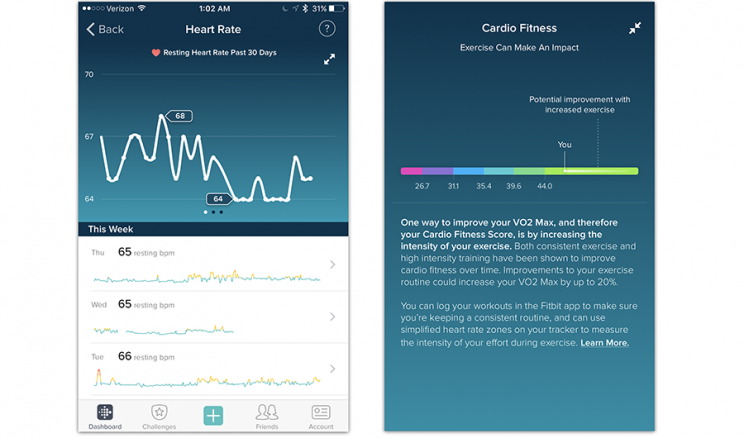
There’s also a new breathing mode. At any time, you can opt for a two- or five-minute relaxation exercise, in which the screen guides you to inhale and exhale, with timing to match little biofeedback animations on the screen. That breathing rate is tailored to you, right now. (How does the band know your breathing rate? Fitbit says that your heart rate is pegged to your breathing: slightly faster when you inhale, slower when you exhale.)

A lot of recent research illustrates that deep breathing lowers anxiety, blood pressure, and even the risk of heart disease; the new Apple Watch incorporates the same exercise (although Apple’s doesn’t personalize the guidance to your current breathing and heart rate, as the Fitbit does).
It all sounded a little too earthy-crunchy to me—until I tried it. In two minutes, I found that my heart rate had dropped 20 beats per minute, and I truly felt more relaxed, more centered. By golly, it works.
Somehow, Fitbit has managed to cram all of this new stuff into the Charge 2 without diminishing its battery life: six days on a charge, in my experience. (That’s one reason I can’t wear an Apple Watch or another smartwatch: If I have to charge it every night, it can’t be on my wrist tracking my sleep.)
The Charge uses a new style of charging cable—a spring-loaded clamp that clicks solidly into place. It’s a great design, but too bad for people who’d bought a couple of charging cables for the older model.
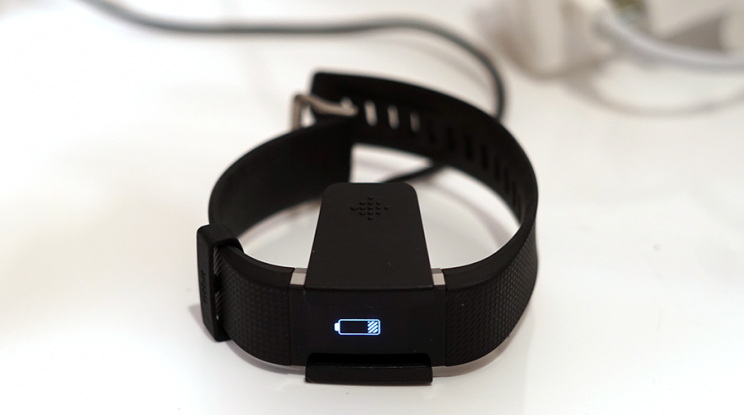
A few Fitbit beefs
The biggest heartbreaker is that the Charge 2 is not waterproof. It’s splash-proof—fine for rain or washing hands—but you’re not supposed to swim or shower with it.
Why is this band not waterproof? Seems like plenty of other companies have solved this problem.
But here’s a little secret: A Fitbit product manager revealed to me that he always wears his Charge 2 in the shower. And so have I, in the month I’ve been testing it. Zero problems.
Fitbit, obviously, doesn’t say you can wear it in the shower; it’s conservative on this point, hoping to avoid complaints from people who have super-jetty shower heads or super-sudsy showering habits. So don’t quote me—but in real life, it’s fine if you dry it off afterward.
You should also note that the navigation on the Charge 2 isn’t Fitbit’s masterpiece. You press the side button to move among main “pages”; you then tap the screen to cycle through the options on each page; and you hold in the side button to start or stop the stopwatch, the tracking or whatever. It’ll take you a while to learn your way around.
Charged up
The Charge 2 really is an outstanding little gadget. Over the years, Fitbit has refined, refined, refined, and the result is a truly together, polished, accurate little device.
If you want a fitness band with pulse tracking and a screen—but don’t want the expense, bulk, and short battery life of a smartwatch—the Charge 2 remains at the top of the heap.
Its toughest competition is the Garmin Vivosmart HR+, which also has stair counting, pulse tracking, move reminders, and multi-day battery life—but you can swim with it. It has a touchscreen, gets more kinds of notifications (email, Facebook alerts, etc.), has built-in GPS, and the black-and-white screen is always on; you don’t have to turn your wrist to make it light up, as you do on the Charge.
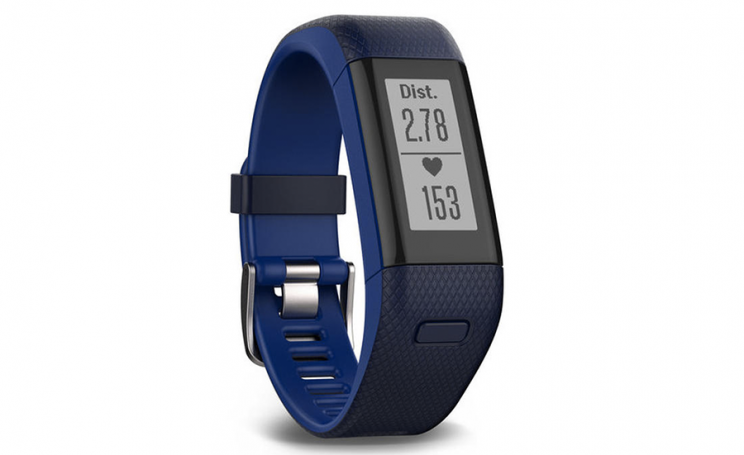
Garmin’s Vivofit HR+ is waterproof and has GPS.
The downsides: The Garmin’s main module is substantially bigger than the Fitbit’s (stretches across the whole top of your wrist); the band isn’t swappable; using the GPS wolfs down battery power; you don’t get the breathing thing; and it costs $50 more ($200).
The rest of the Fitbit line
Also new this fall is the Flex 2 ($100), which is Fitbit’s first waterproof tracker that’s perfectly happy to track your laps in the pool.
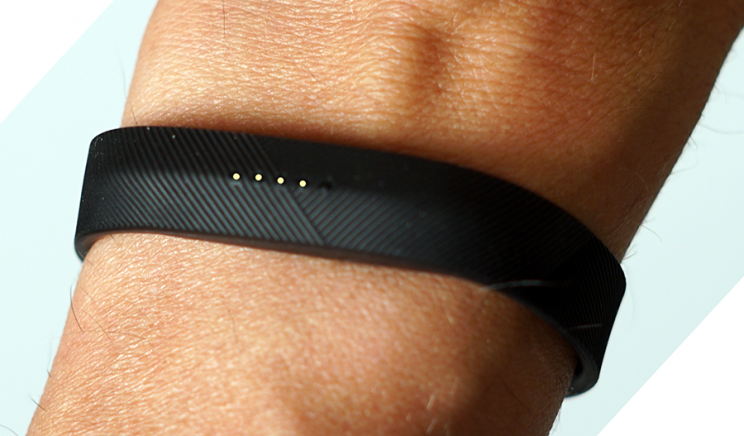
It’s incredibly small and thin and light—30% slimmer than the original Flex—but it doesn’t have a screen. Instead, five colored LED dots blink in various cryptic patterns and colors to communicate with you.
Standard Fitbit features present: Sleep and step tracking; auto-recognition of running, walking, biking, swimming; silent alarms; five-day battery life; the great Fitbit app; and interchangeable bands and even necklaces that accommodate the tiny brain capsule.
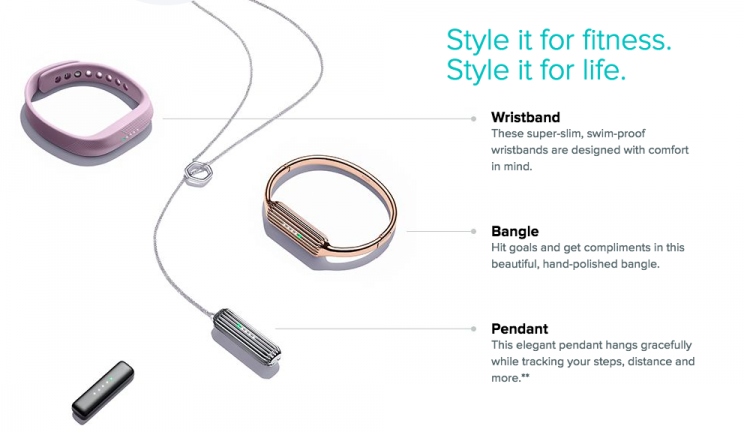
Features missing: a screen; breathing exercises; stair counting; pulse tracking; connected GPS; multi-sport tracking; VO2 calculations.
I don’t know. I need a screen. If I’m going to strap something on my wrist, it had better tell the time at the very least. But what do I know? Maybe this thing is so small and thin, people will also wear a watch.
Fitbit also sells the Alta ($130), which offers yet another combination of features. It essentially matches the description of the Flex 2 (slim, choice of bands)—but you sacrifice the waterproofness and gain a screen that shows notifications. (Here’s my review.)

And then there’s the Blaze ($200), a watch-size tracker that I reviewed here.
The kind of tracker you want—if you want one at all—depends on the importance you place on style and looks, your athleticism, and your number-crunchiness. Maybe you just want a kick in the motivational pants, or maybe you thrive on a stream of body stats.
For me, of all the trackers in all the styles, the Charge has always struck the best balance of features and size. And with its better looks and bigger screen, the Charge 2 is even more convincing as one of the most satisfying health gadgets you can strap on your wrist.
David Pogue, tech columnist for Yahoo Finance, welcomes non-toxic comments in the Comments below. On the Web, he’s davidpogue.com. On Twitter, he’s @pogue. On email, he’s [email protected]. Here’s how to get his columns by email.